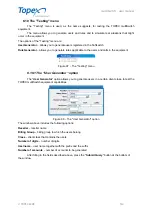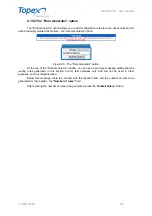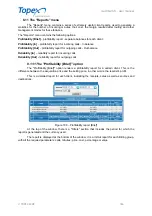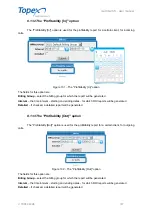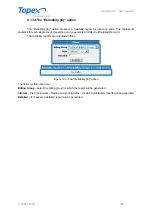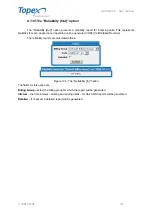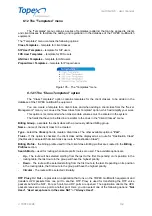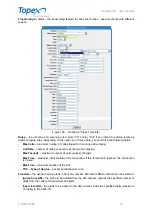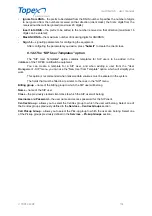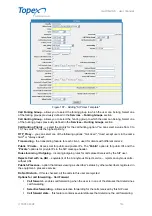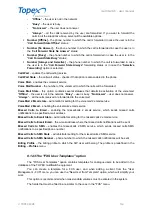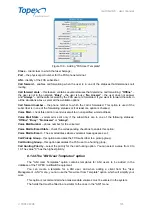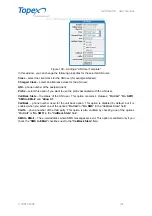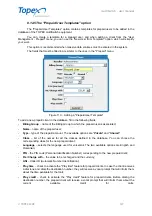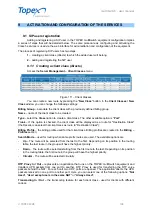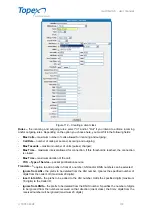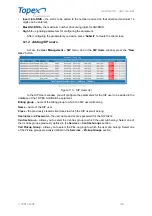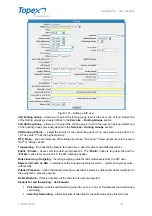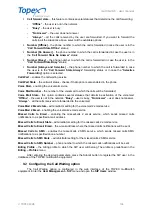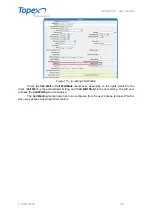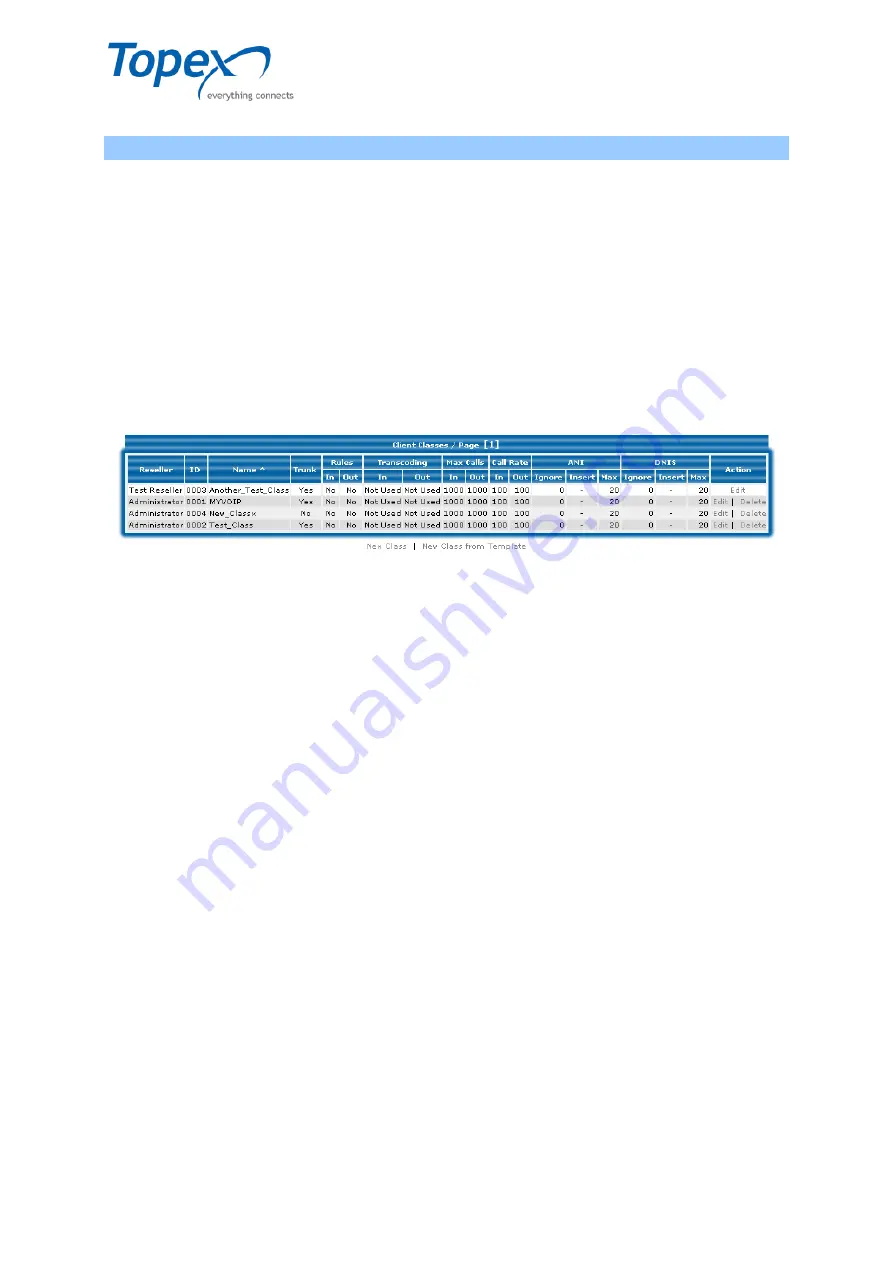
multiSwitch – user manual
© TOPEX 2008 138
9
ACTIVATION AND CONFIGURATION OF THE SERVICES
9.1 SIP users registration
Adding and registering a SIP user in the TOPEX multiSwitch equipment configuration implies
a series of steps that will be detailed below. The same procedure as configuring and activating the
Class 5 services is used via the web interface for administration and configuration of the equipment.
The process of registering SIP users has two steps:
1
– creating a client class (directs) to which the added user will belong
2
– adding and registering the SIP user
9.1.1 Creating a client class (directs)
Access the
Server Management – Client Classes
menu.
Figure 111 – Client Classes
You can create a new route by pressing the "
New Class
" button. In the
Client Classes / New
Class
window you can change the following settings:
Billing Group
– associate the client class with a previously defined billing group
Name
– name of the client class to be created
Type
– select the
Class
option to create a client class. The other available option is "
Port
".
Trunk
– If this option is checked, the client class will be displayed as a route for "Destination Class"
(the Reseller can select that client class as route to "Destination Class");
Billing Profile
– the billing profile used for that client class. Billing profiles are created in the
Billing –
Profiles
section;
Search Mode
– used for routing when same prefix routes are used. The available options are:
-
Up
– The route will be selected from the last to the first. Depending on its position in the routing
table, the last route in the group will have the highest priority.
-
Down
– The route will be selected starting from the first route to the last. Depending on its position
in the routing table, the first route in the group will have the highest priority.
-
Circular
- The route will be selected circularly.
RTP Proxy In / Out –
represents an application that runs on the TOPEX multiSwitch equipment and
transfers UPD packets from one port to another. RTP Proxy is used for transferring the RTP voice
packets behind the NAT. For each call, two UDP ports are opened. The application directs the UPD
packets received on one port to another port. Here, you can select one of the following options: "
Not
Used
", "
Used except users in the same NAT
" or "
Always Used
";
Transcoding In / Out –
the transcoding feature for each client class - used for clients with different
codecs;

